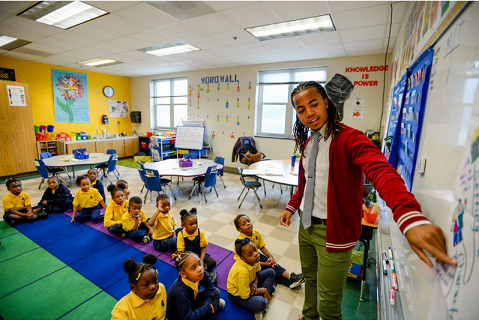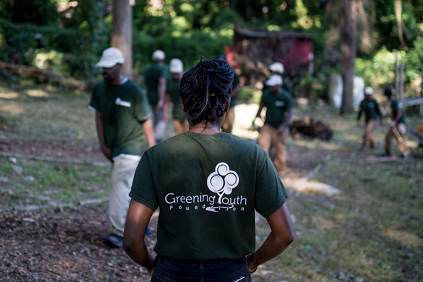An Easy Step to Improve Transparency and Access in Philanthropy

Grantmakers can have a reputation for having opaque guidelines and limited access to information. David Weitnauer and his colleague, Rachel Sprecher, explain how The Dobbs Foundation took another step towards transparency and accessibility with their Open Information Sessions.
Black Box.
Enigma.
Total mystery.
No, these are not a reference to Thursday’s Wordle or how ChatGPT works. They’re regrettable tropes we’ve heard (and voiced) over the years from both sides of the funding table to characterize private foundations and the grantmaking process in general.
Grantmakers have made limited information and inaccessibility a way of life. Even in an era marked by significant progress on this front, grantseekers continue to shake their heads. As some would say, the more things change, the more things stay the same.
The combination of unpublished guidelines or unclear application procedures and donor inaccessibility makes the extremely challenging job of raising funds more complicated than it already is, not to mention personally frustrating for those who do the work.
Assuming that we recognize that our effectiveness depends on the success of our partners, it should not be lost on foundation trustees and staff that this way of operating is self-defeating. Philanthropy’s penchant for remaining at arm’s length makes everyone’s work harder than it should be.
Trimming Philanthropic Bureaucracy
Thankfully, we continue to learn. The pandemic and the country’s reckoning with racial injustice both served as catalysts for change. Funders everywhere realized it wasn’t difficult to trim philanthropic bureaucracy to move money faster without sacrificing effectiveness.
The Dobbs Foundation took another step toward transparency and accessibility in 2022 by piloting monthly “Open Information Sessions” via Zoom for anyone interested in learning about the Foundation, people who work here, grantmaking priorities, and our process for engagement. Our Open Information Sessions are akin to “office hours” in higher education.

The Dobbs Foundation supports projects across the three focus areas of education, environment, and health. Photo: Profound Gentlemen
When getting ready to launch, we used our networks to get the word out among nonprofits and partners. On the Foundation’s “Contact” page of our website, we posted a notice about these sessions at the top of the page.
After putting the word out, we received a very strong response. In fact, when facing the prospect of holding our first session with more than 25 in a Zoom room, we decided to limit participation. We wanted to balance responsiveness and efficiency while retaining potential for personal engagement among each month’s group.
We settled on a ceiling of ten participants per session and we do this by asking people to register. In addition to helping us manage monthly enrollment, the registration list enables us to communicate prior to the session (e.g., sending confirmation, the Zoom link and a reminder as the day approaches). After working through the initial wave of demand, we now tend to have people scheduled about two months out.
The agenda for monthly sessions is straightforward but we have tweaked our approach with experience. We start with introductions among Dobbs staff and our participants. We then provide a brief introduction to the Foundation’s history and board. Referring to our website via shared screen, we talk through an overview of our three focus areas. This serves to interpret language used on the website and underscores the intended value of the website as an ongoing resource. We always reference a searchable grant history on the website while making the point that reviewing a list of grants approved is the best way to understand how our board translates guidelines into action. Finally comes a primer on our inquiry and application process.
We encourage questions along the way but always leave time for Q and A. We make it clear that nothing’s off limits for discussion. In spite of the power dynamics in play, we’ve been pleasantly surprised by the candor of participants. For example, we often find a group talking about fundraising practices and the unique challenges of building support from foundations.
“Many times, grantmakers can feel like ‘Oz behind the curtain.’ Not only did the Open Information Session offer practical tools for crafting better proposals, it added a human connection that made the foundation more like a partner.”
Sessions are scheduled for one hour. Sometimes we go an extra 15 minutes and other times we’re finished in 45 minutes, depending on each group’s level of engagement. We’re prepared to cut things off if conversation were to push past an hour and 15 minutes but we’ve never had to do it.
Never Going Back
With a year’s experience under our belt, we’ll never go back. Holding Open Information Sessions is an easy thing to do. They are clearly helpful for participants (more below) and we’ve seen benefits on our end.
As a practical matter, it’s clear many of the attendees use sessions to clarify whether work they represent is aligned with the Foundation’s priorities. We’ve always been willing to schedule individual conversations for this purpose—in fact, we encourage grantseekers to contact us before submitting an LOI. We’re finding people use Open Information Sessions for this purpose instead of asking for an individual Zoom which makes for efficiency.

Feedback from prospective grantees about the information sessions has been overwhelmingly positive. Photo: Greening Youth Foundation
Open Information Sessions have also impacted us on a more personal level which, we would maintain, makes us more effective grantmakers.
Specifically, when we meet people in this context and they introduce themselves and the roles they play—founder, intern, executive director, development director, grantwriter, consultant—we tend to have an experience of the people behind the roles, even if only in glimpses. It’s an occasion for empathy and provides a measure of understanding of each person’s responsibilities, sense of purpose, and the investment they make each day to fulfill their charge or calling.
This type of awareness, even if only snapshots, represents our first steps toward getting to know new people who live and work on the other side of the philanthropic relationship. The more we develop that awareness and grow our relatedness, the better we’ll be as grantmakers.
Feedback from participants has been overwhelmingly positive.
“As a grant seeker in a new organization, the Open Information Session was an easy way for me to check for alignment, begin establishing a relationship with the foundation, and hear directly from people who lead the grant application process. While a website is a useful tool, it’s no substitute for a direct line of communication with someone on the grant team within a foundation.”
“Time is money. The information session I attended was succinct, informative, and provided a macro view of what the Foundation is doing and a micro view of their grantmaking process. If all grantmakers provided this type of access, it would cut down research time and help grantseekers make more informed decisions about submitting applications.”
“The session brought to light options for support I hadn’t considered for our organization. Meeting the staff and having the opportunity to ask questions made a big difference.”
Finally, here is feedback we hear every time we hold a session: “I wish more foundations would do this.”
Easily Replicable
We offer this experience in hope you’ll consider trying it. If you or someone associated with the foundation you represent, staff or trustees, would like to join us for a session to observe, you would be welcome. We’re also glad to talk via email, phone, or Zoom to compare notes and answer questions about our experience.
The more we minimize the inherent friction of the grantseeking-grantmaking process while, at the same time, becoming more genuinely related to our partners, the more effective we’ll all be as we seek to respond to the urgent needs of our communities.
In time, maybe we’ll hear more words used like these when describing foundations:
Crystal clear!
Unambiguous!
Friend instead of foe.
David Weitnauer is President of the R. Howard Dobbs, Jr. Foundation and is an NCFP Distinguished Fellow.
Rachel Sprecher is Relationships Manager of the R. Howard Dobbs, Jr. Foundation.
The views and opinions expressed in individual blog posts are those of the author(s) and do not necessarily reflect the official policy or position of the National Center for Family Philanthropy.
